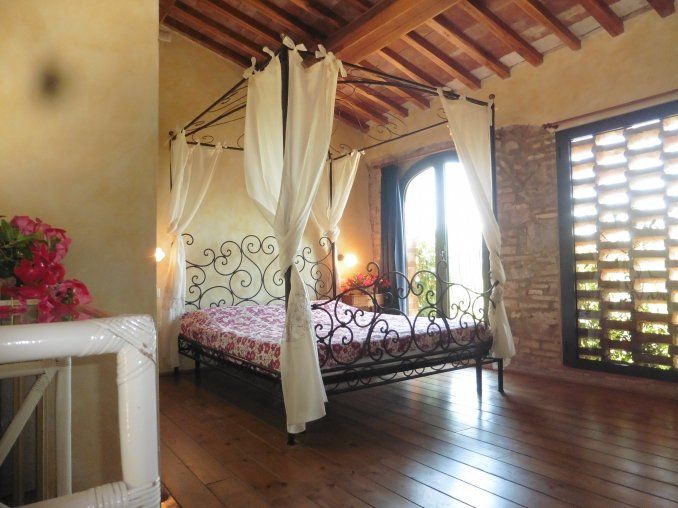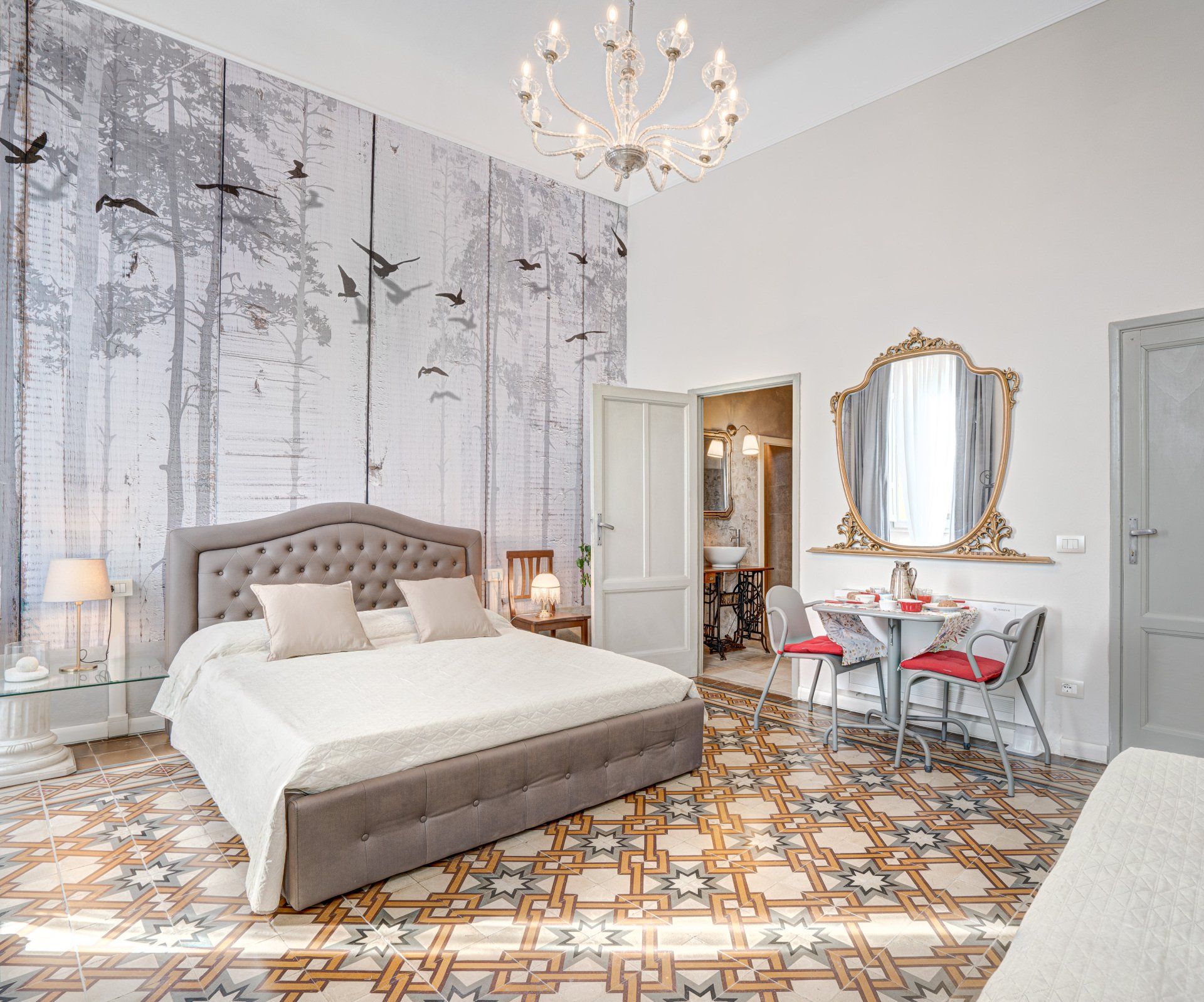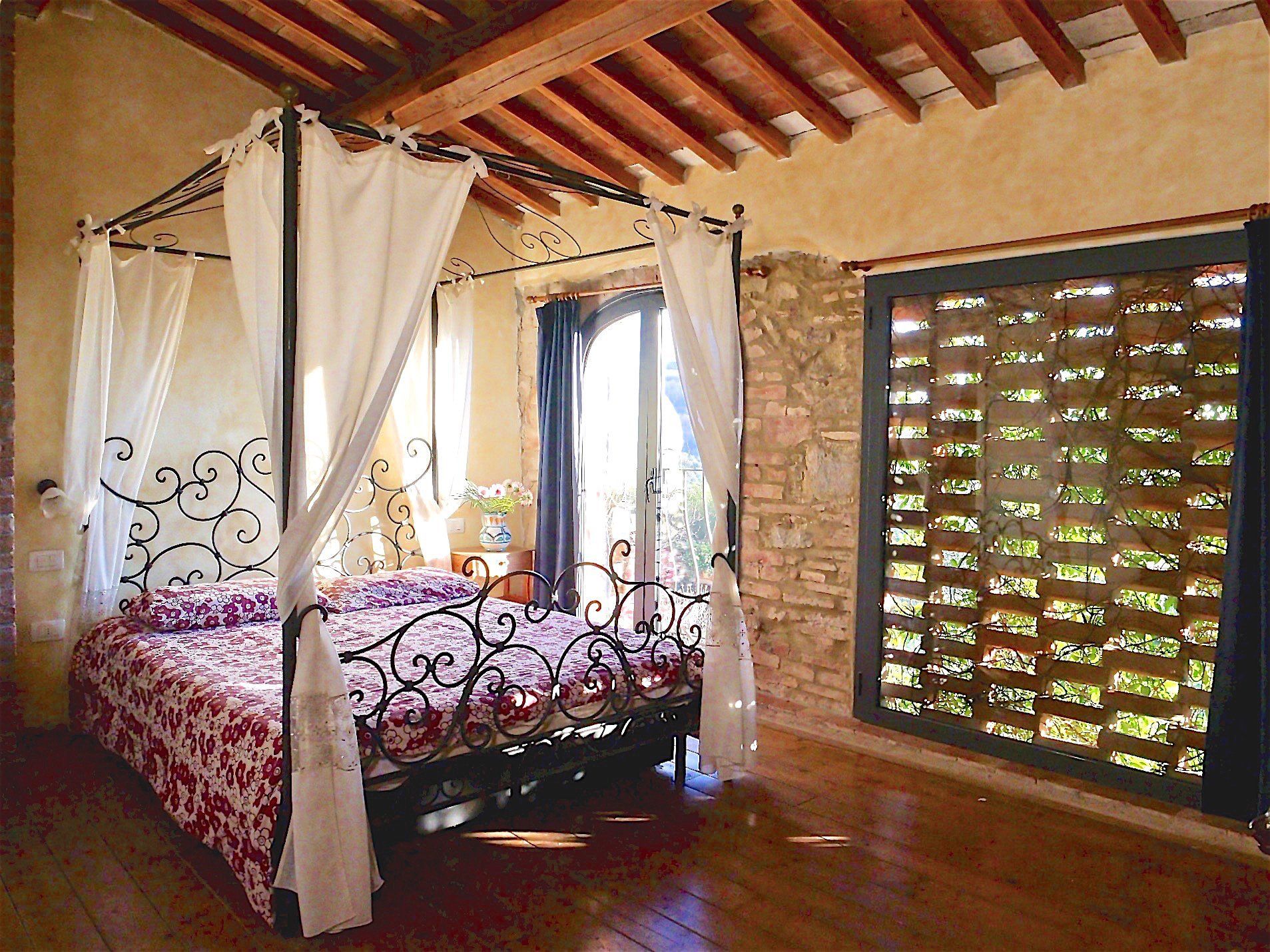Siena
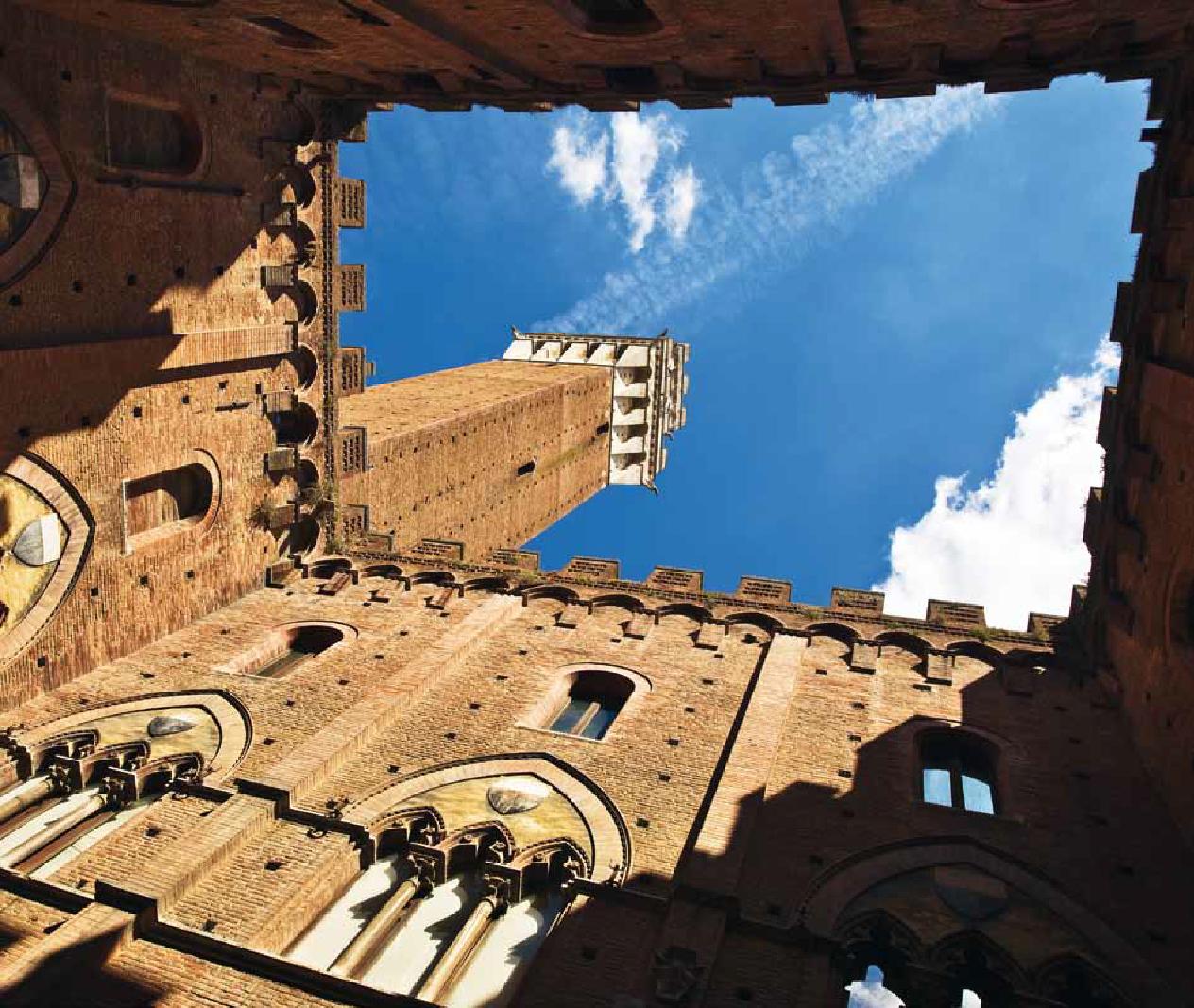
Slide title
Scrivi qui la tua didascaliaButton
-
Siena - Three different ways to discover the city
A city to discover in three different ways: we can in fact walk along the city’s ancient “Terzi” (Thirds) among the Serena stone of the alleys and the red brick of the buildings, or you can look at the city from up high, either from the Mangia tower or from the communication pathway of what should have been the great façade of the Duomo, which remained unfinished. Finally you can explore the underground life of the city walking along the complex 25-km long medieval waterworks.
The ‘Terzo di Città’ (City’s Third) is the lay and religious heart of Siena; Via di Città links its political pole, Piazza del Campo, to its religious pole, represented by Piazza del Duomo. In this ‘third’ we find, among others, the complex of Santa Maria della Scala, which features vast culture venues and museums, the Chigi Saracini palace and the Papesse palace, the latter a contemporary art centre.
The ‘Terzo di San Martino’ (San Martino Third) took shape along the Francigena way, which took pilgrims to Rome. The name of this area is in fact reminiscent of the name of the saint protector of pilgrims and travellers. We are in Piazza del Campo, the heart of Siena which has always been people’s meeting place during events such as the famous Palio, held every year on 2nd July and 16th August. A highlight of the square is the ‘Fonte Gaia’, a large fountain called ‘Merry Fountain’ in remembrance of the joy displayed by Siena’s people when they saw water gush out in the square.
In the ‘Terzo di Camollia’ (Camollia Third) the Basilica di Santa Maria di Provenzano, built in 1595 to house a terracotta image of the Madonna to which are attributed miracles occurred on 2nd July 1594 stands out. It is to commemorate that event that since 1656 the Palio has been raced on 2nd July. Climbing down towards the right we get to Fontebranda, a spring which is the richest in water of the city. The long staircase to the left of the spring leads to the Basilica di San Domenico, where Saint Catherine had her first vision, aged six.
Siena the three districts of the city three different ways of visiting the city
3/6//2023
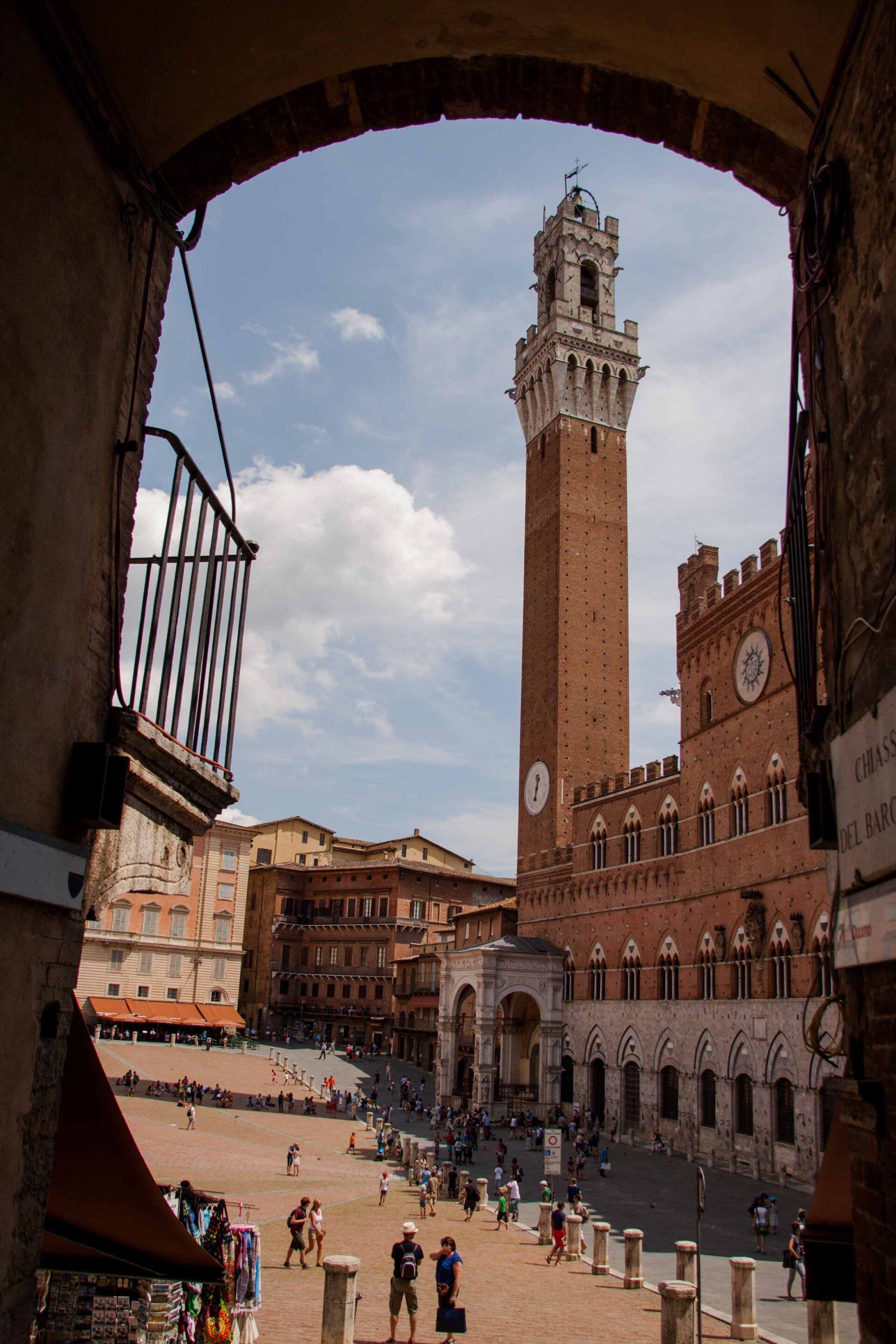
Slide title
Scrivi qui la tua didascaliaButton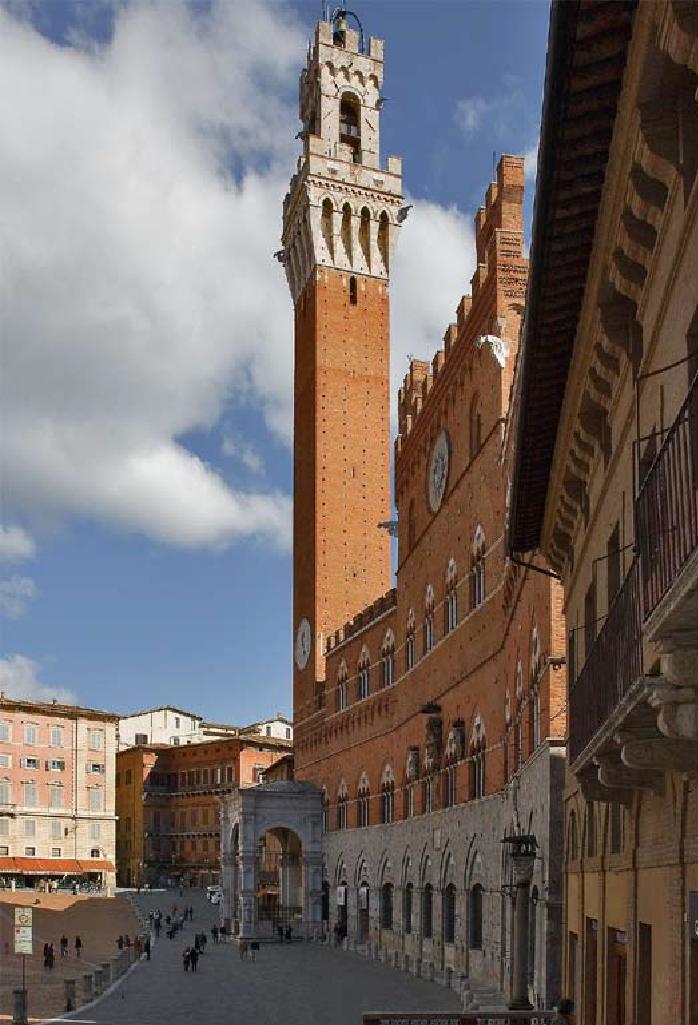
Slide title
Scrivi qui la tua didascaliaButton
-
Siena - The Torre del Mangia
An architectural miracle of lightness and style. In piazza del Campo, to the left of the Palazzo Pubblico, soars the Torre del Mangia, the tallest in Tuscany and the second tallest in Italy. The tower, which was built according to a design
attributed to Lippo Memmi between 1338 and 1348 by Muccio and Francesco Di Rinaldo from Perugia, is made of bricks and features coping made of stone and a belfry. 400 steps lead to the 88-metre-high top, which offers a thrilling view of Siena and its surroundings, all the way down to the Maremma. The tower owes its curious name to its first bell-ringer, Giovanni di Duccio, who was put in charge of marking the hours in 1347. Di Duccio was a food-lover who spent most of his income in the pleasures of the table, so much so that he was nicknamed ‘Mangia-guadagni’ (Earnings-eater). The irony of the story is that while the powerful spent their time weaving secret plots, the ‘Mangia’ sat quietly in one of the square’s inns, quietly eating traditional dishes while looking at the tower which would always bear his name.
-
Opening time and entrance tickets
Opening time:
From November 1st to February 28th
10.00-13.00 / 13.45-16.00 (ticket office closes and last admission at 15.15)
Christmas - closed
New Year's Eve, 12.00-16.00 (ticket office closes and last admission at 15.15)
From March 1st to October 31st*
10.00-13.45 / 14.30-19.00 (ticket office closes and last admission at 18.15)
Entrance fees:
Whole : €10.00
Family : €25.00 (2 adults + minors over the age of 11)
Free admission: children up to 6 years. Children under 14 must be accompanied by an adult.
Tickets for Torre del Mangia cannot be booked in advance and must be purchased directly at the ticket counter.
Siena La Torre del Mangia opening hours and tickets
3/6//2023
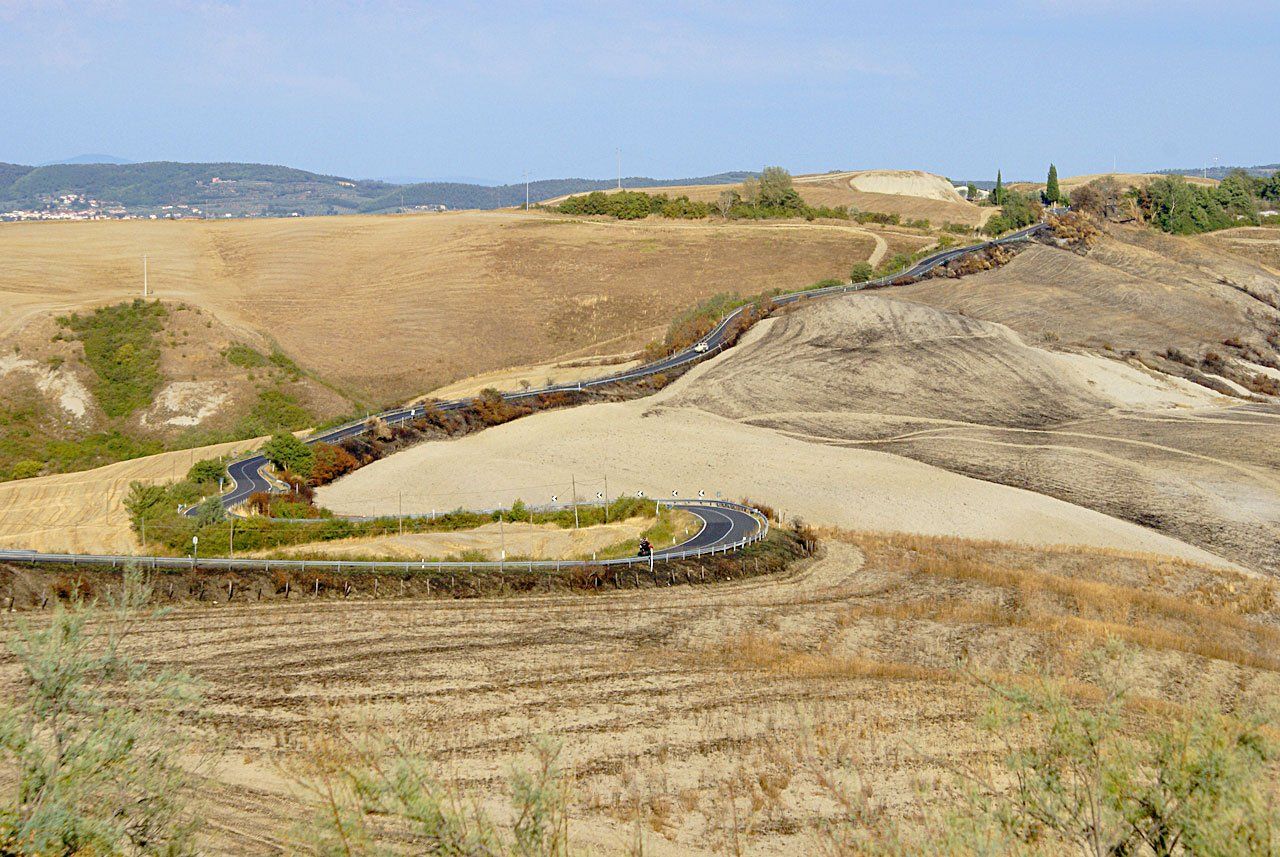
Slide title
Scrivi qui la tua didascaliaButton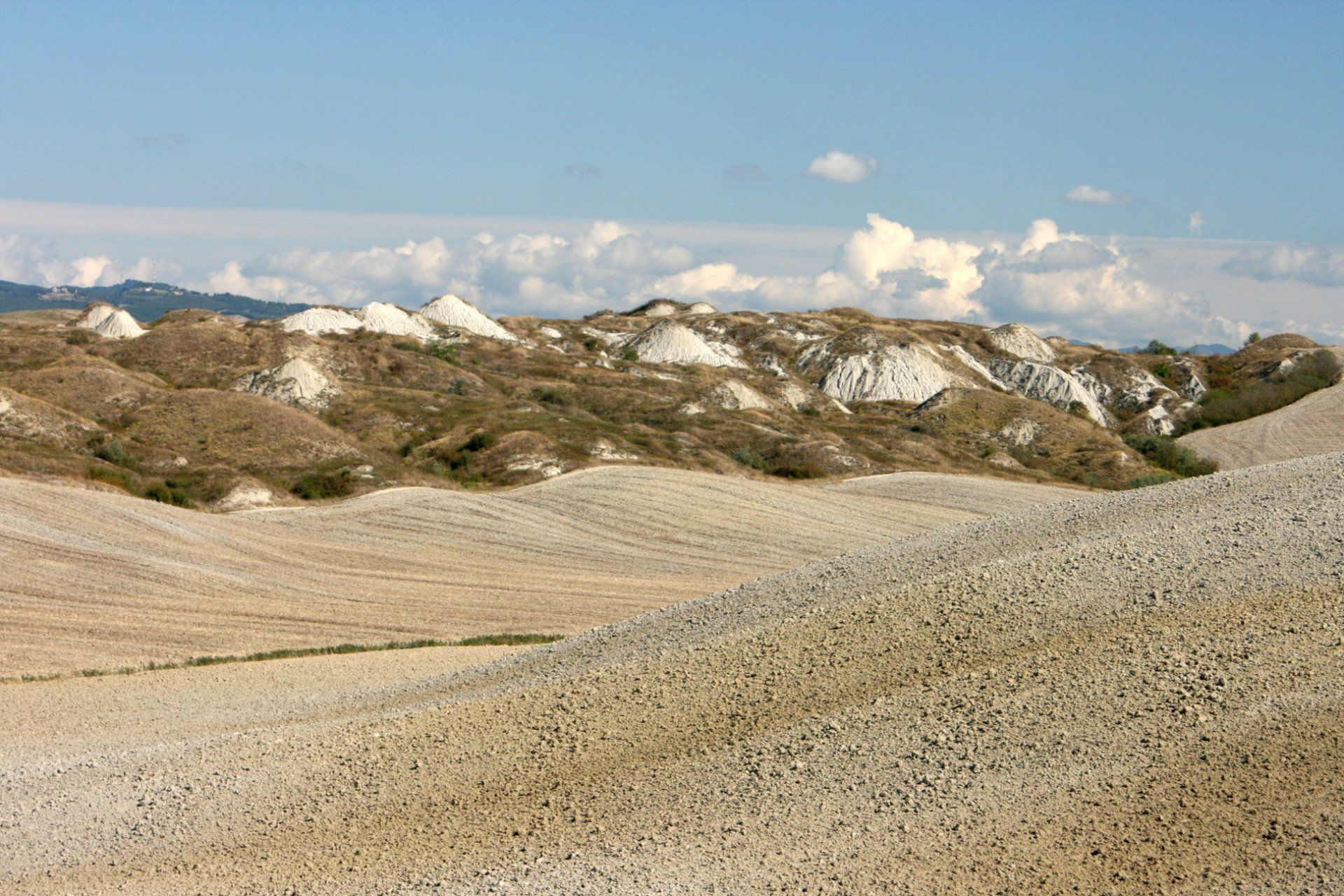
Slide title
Scrivi qui la tua didascaliaButton
-
Siena - The Crete Senesi
The “Crete senesi” is the suggestive lunar landscape of gullies and hills south of Siena. It occupies a vast area of the territories of Asciano, Buonconvento, Monteroni d‘Arbia, Rapolano Terme and San Giovanni d‘Asso. This barren area has almost remained intact conserving its original characteristics: still today it’s difficult to cultivate olive trees and grapevine although corn and sunflower are very common thanks to the work that has been done to enable the watering. The nudity of the landscape change colour each season: the gray clay, the yellow nuances of the sulphate, the mature corn and the intense green of the grass. A malleable earth where the herd paths are visible, like the antique road Via Cassia constructed by the Romans and renamed “via Francigena” by the emperors. Thousands and thousands of pilgrims have walked across here during the centuries and therefore the road is lined by many parishes, abbeys and small fortresses.
-
Recommended itinerary
We would suggest a circular itinerary of about 75 kilometers long starting from Siena and then going south on the Via Cassia (S2). You will go across the main municipalities and you can go through the mountain range, in the heart of the Crete, till you reach the abbey of Monte Oliveto Maggiore – surrounded by thick forest.
Going back you take the Lauretana (S438), you will pass by villages like Asciano where it’s worth to pause a bit and have a look around. In Taverne d’Arbia, you go back taking the Statale 73, just outside Siena.
Siena the Crete Senesi recommended tour itinerary
3/6//2023
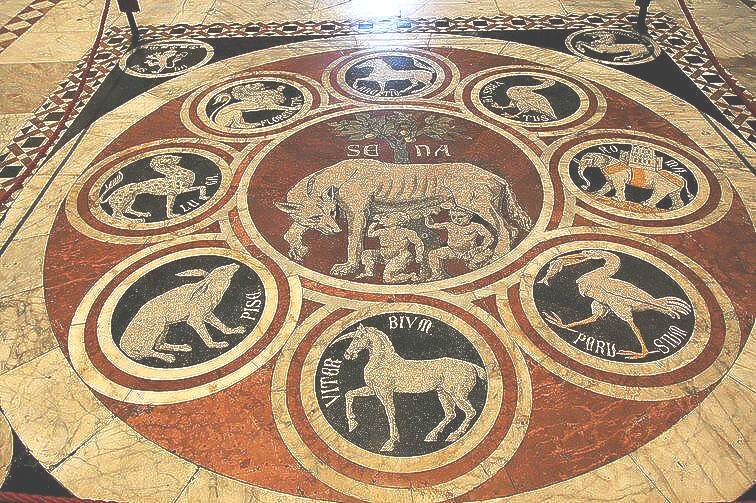
Slide title
Scrivi qui la tua didascaliaButton
-
Siena - Inlaid Floor of the Cathedral
The Cathedral of Siena contains numerous masterpieces from every epoch. A work that in many respects is exceptional, is the floor, "the most beautiful ... largest and most magnificent ... that ever was made" in the words of Giorgio Vasari, the fruit of a plan that took on concrete form through the centuries, from the XIV century up to the XVIII century.
The techniques employed to transfer the ideas of the various artists onto the floor are marble intarsia and graffito: the procedure was initially quite simple but gradually attained a surprising degree of perfection: the first depictions were scratched onto slabs of white marble using a chisel and a drill, and the signs then filled with black stucco. This technique is known as "graffito". Then, coloured marble was employed in much the same manner as wood inlaying. This technique is called "marble intarsia".
The 56 intarsia of the floor are still largely in its original condition. As these artworks are quite sensitive, the entire floor is shown only a few weeks a year. Otherwise, the ground is covered and only a few works are visible for the many tourists that visit the Cathedral of Siena.
-
Entirely uncovered floor of the Cathedral
Uncovering of the floor of the Cathedral of Siena in 2023:
June 27 - July 31;
18 August - 18 October
From Monday to Saturday
PRICES
From 27 June to 31 July and from 18 August to 18 October 2023
FULL TICKET:
€ 8.00
REDUCED (Groups and school groups> 14 and groups with guide):
€ 6.00
FREE
Children up to 6 years of age
Residents and / or born in the Municipality of Siena
Accredited journalists
Disabled with companion
info and booking:
+39 0577 286300
opasiena@operalaboratori.com
22/5/2023
Siena - Inlaid Floor of the Cathedral
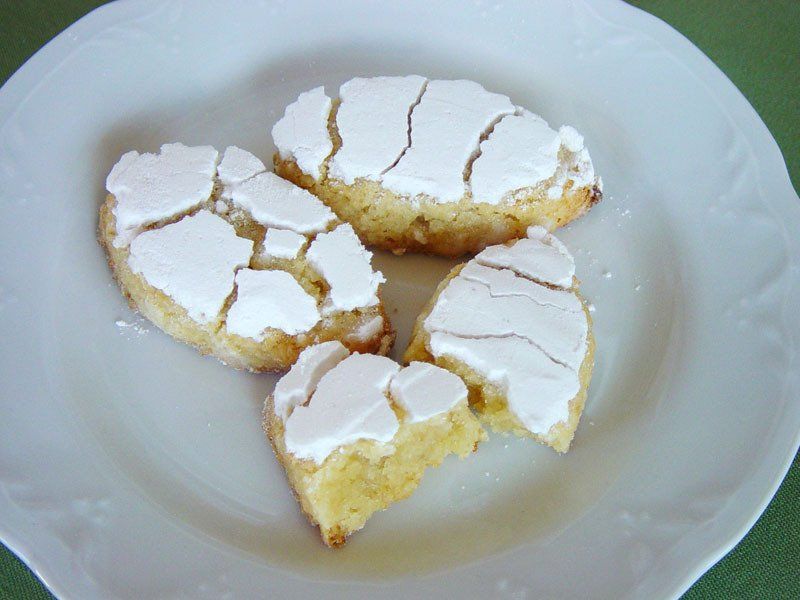
Slide title
Scrivi qui la tua didascaliaButton
-
Siena - the Ricciarelli
Siena is with no doubt the sweetest town of Tuscany!
The products of its confectionery are famous all over the world.
And the Ricciarelli, along with Panforte, are perhaps the most famous ones from Siena. The origin of these delicious biscuits is exotic because their taste and smell remind of the East.
According to the legend a Sienese crusader, Ricciarello della Gherardesca, coming back to his castle near Volterra after fighting in the Holy Land, brought the recipe of these foreign biscuits, the shape of which reminded of the Turkish sleepers.
According to a folk tradition it seems they are the result of a mistake! In the convent of the Servants of Mary, an impatient nun put to dry the traditional marzipan biscuits at a temperature too high, cooking them too much and change them into crunchy and curling “ricciarelli”.
-
Recipe of Ricciarelli
Ingredients: sweet almonds, sugar, baking powder, cinnamon, salt, eggs, wafer, honey.
Preparation: Grind the almonds and mix them with the egg white, honey, sugar, baking powder and the spices. Mix well the dough and shape the biscuits with the ricciarelli mould. Put them on a baking-tin, sprinkle with icing-sugar and cook up to 180°C for about 25 minutes.
-
Where to find them
In our opinion, one of the best places in Siena to buy artisanal Ricciarelli is:
La Nuova Pasticceria
Via Giovanni Duprè 12
Siena
Here you can also find the Panforte.
Siena - The Ricciarellis. Brief history and where to buy them
4/6/2023
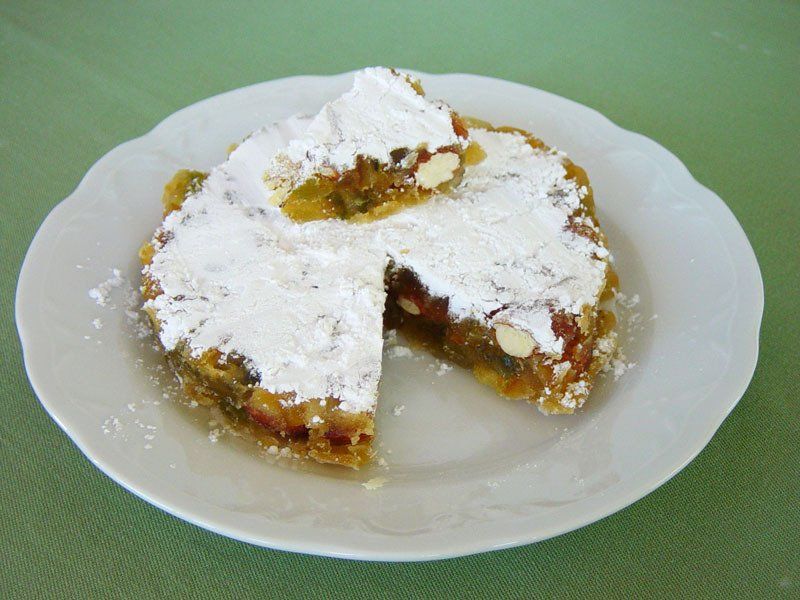
Slide title
Scrivi qui la tua didascaliaButton
-
Siena - the Panforte
The Panforte di Siena is the typical cake of the city, known since the Middle Ages. In origin it was a simple cake, prepared with flour and honey; then it was added the fruit, usually grape, almonds and figs, and, after the discovery of the spices, also cinnamon, nutmeg, coriander, pepper (for this reason the other name of Panforte is PanPepato). The recipe of PanPepato did not have modifications and the ingredients had remained the same until the year 1879, when the Queen Margherita arrived in Siena. For this occasion a chef prepared a sweeter Panforte, with vanilla, that he called Panforte Margherita (or white Panforte). This cake is usually served with sweet wines, as the vinsanto.
-
Where to find it
In our opinion, one of the best places in Siena to buy artisanal Ricciarelli is:
La Nuova Psticceria
Via Giovanni Duprè 12
Siena
Here you can also find the Ricciarelli.
4/6/2023
Siena the Panforte. Brief history and where to buy it



